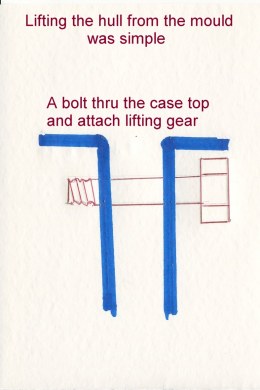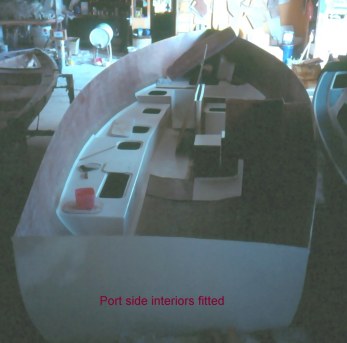from Rob Legg Yachts | |||||
|
|
|
|
|
||
Episode 7: Designing the RL28
While work was progressing on preparing the deck and interior moulds, I made up what seemed to be an
endless list of sundry items that would have to be organised before we could complete the first boat.
Go back to Previous Episode | Go back to Index | Go on to Next Episode

We had decided to follow Lloyds laminating requirements from the start, but only follow their and H&M requirements on survey boats as some of their rules were rather out of place on a 28 ft trailerable boat. Note. If by chance you happen to own an ex charter boat you will find that your boat will be about 150 Kg heavier than normal because we added extra ballast to these boats to meet survey requirements, even though self righting ability was well in excess of AYF standards. The first boat was going to be our demo boat and as we already had two hulls moulded, a set of interiors and a deck were top priority.

All went well with fitting the deck to the hull, and the interior timber work commenced. This was slow at first as patterns had to be made of everything as it was fitted. Also the electrical wiring was to be run inside conduit and glassed in, and every wire was to be measured so that looms could be made up in advance. The one thing that I couldn't make my mind up on was about the lining for the deck head. Originally the intention was to make a complete fibre glass liner, but when we looked at all the fastenings from fittings on the cabin top, it just didn't seem practical. I have often wondered since just how that carpet stood up over time. |


